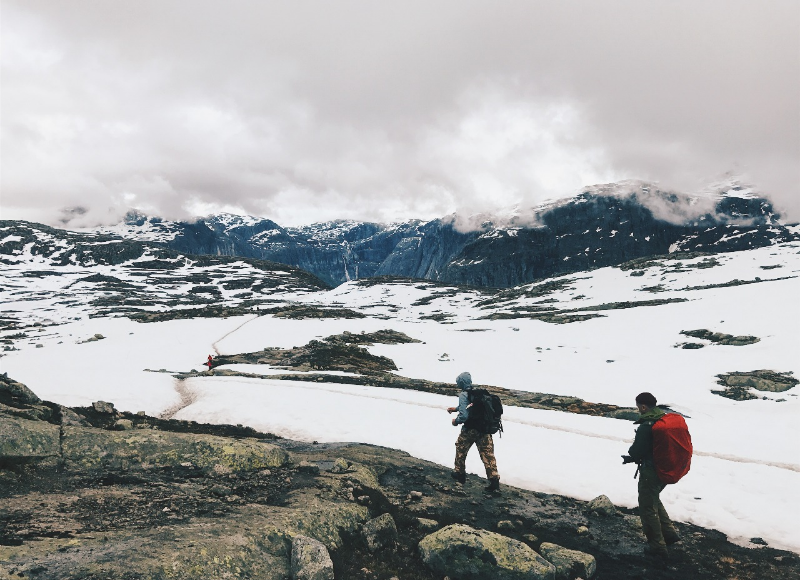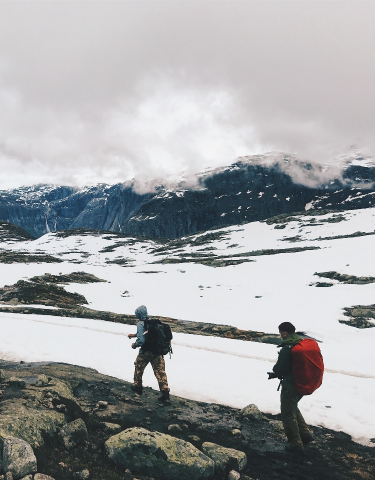Introduction
Mount Everest once again became the site of a large-scale disaster when an unprecedented blizzard trapped over 1,000 trekkers and guides on the world’s highest peak. This event, which unfolded over several days, began when a powerful snowstorm hit the region, creating conditions so extreme that climbers and trekkers were stranded for extended periods without reliable shelter or supplies.
According to multiple reports, the blizzard intensified unexpectedly, with winds exceeding 120 km/h and snow accumulation reaching record-breaking depths. For those stranded while mountain trekking, the situation escalated quickly from a challenging trekking experience to a life-or-death scenario. Rescue teams from Nepal, Tibet, and surrounding regions worked tirelessly, overcoming logistical and weather-related hurdles to ensure the safety of all individuals trapped on the mountain.
From a risk management perspective, this event provides critical lessons on risk identification, assessment, mitigation, and the importance of preparedness in high-risk, extreme environments like Everest. The following sections of the blog explore the root causes of the Everest disaster, critical risks, and mitigation strategies that could improve the management of such incidents in the future.
Dissecting the Landscape of Risks in high-altitude expeditions
Below are the key categories of risk encountered during this crisis:
1.Environmental Risks
- The primary risk arose from the sudden onset of a massive blizzard that trapped climbers at altitudes exceeding 8,000 meters, well beyond the point where human survival becomes increasingly precarious.
- The intense snowfall and shifting ice created additional hazards, leading to fears of avalanches that could have worsened the situation.
- The freezing temperatures not only caused immediate health risks but also heightened the likelihood of frostbite and hypothermia, making medical intervention difficult.
2.Social Risks
- Many trekkers who were mountain climbing, were not fully prepared for such a rapid weather change. Some were caught off-guard by the severity of the storm and were ill-equipped to endure the prolonged exposure.
- Another failure point was the breakdown in decision-making—some climbers and guides continued to ascend despite worsening conditions, while others were unsure about when to descend or seek shelter. Poor communication between base camp, guides, and trekkers exacerbated these decisions.
3.Operational Risks
- Climbers were often isolated without reliable communication devices, and the remoteness of the region exacerbated the difficulties in coordinating rescue efforts.
- With so many climbers stranded, logistical issues such as crowding at the summit led to delays in evacuation, further complicating rescue operations.
4.Health and Safety Risks
- The prolonged exposure Situs Slot88 to extreme conditions led to a spike in altitude sickness, dehydration, and exhaustion among climbers. These health issues compromised their ability to descend or remain mobile, increasing the risk of fatalities.
- The lack of proper medical infrastructure at such high altitudes meant that climbers requiring immediate medical attention had to be airlifted under extremely dangerous conditions.
5.Reputational and Financial Risks
- The episode exposed operators and regional authorities to possible reputational harm and substantial financial liabilities for delayed rescue and loss of life.
Evaluating the consequences and impact of uncertainty in alpine extremes
Understanding the potential consequences of risks is essential in assessing their impact. A risk assessment of the blizzard on Everest illustrates the compounded effects of these risks.
- The primary concern during the crisis was the threat to human lives. Several climbers were stranded without shelter, and many experienced severe frostbite and other life-threatening injuries. Ultimately, despite the best efforts, the risks to human life were the most severe consequences of the disaster.
- The financial cost of the rescue operation was significant. Helicopter rescues, medical evacuations, and the mobilization of a large-scale emergency response team placed an enormous strain on both local and national resources. In addition, the international tourism sector, particularly the trekking industry in Nepal and Tibet, was deeply impacted, as many climbers and trekkers cancelled future expeditions in the aftermath of the disaster.
- The event also placed a spotlight on the local agencies and tour operators involved in guiding climbers to Everest. The failure to anticipate such a severe weather event raised questions regarding the competence of these agencies in managing risk. Public perception of Everest as a safe destination for tourists may have been permanently affected.
- The blizzard, combined with overcrowding, put significant stress on the delicate environment of the Everest region. Increased waste and other expedition materials exacerbated the environmental risks on the mountain.
Why Did the Risks Amplify?
The catastrophic level of stranding can be traced to several deep-seated root causes:
Over-commercialization: Increased permits and larger commercial expedition sizes have dramatically raised mountaineering traffic. High tourism volumes in short windows compromise risk controls and congest evacuation routes.
Inadequate Forecasting Systems: Despite technological advancements, the unpredictability of Everest’s weather systems caught climbers and rescue teams off-guard. Forecasting systems were not adequately fine-tuned to predict the blizzard’s onset in real-time. The limited communication infrastructure above base camp hindered the quick exchange of information between teams, guides, and rescuers.
Poor Emergency Planning: Despite the existence of basic weather forecasts, many trekkers underestimated the severity of the conditions. Many expeditions operated without robust, scenario-tested contingency plans. The lack of advanced, specialized training in high-altitude survival and the absence of proper gear exacerbated the risks. Staff training for crisis leadership and triage was minimal or non-standardized.
Resource Concentration: The operational challenges of conducting rescues at extreme altitudes are formidable. With limited helicopter availability and medical infrastructure, the ability to evacuate climbers in a timely manner was severely compromised.
Lack of coordination among stakeholders: Multiple agencies, including the Nepalese government, local sherpas, and international mountaineering groups, were involved in the rescue efforts. However, the lack of coordination and clear communication led to delays in rescue operations and the inefficient use of available resources.
Regulatory Weakness: Enforcement on outfitter standards and climber qualifications has lagged behind industry expansion, increasing the risk pool.
Risk Mitigation Strategies for improving future Everest expeditions
- Implementing stricter limits on the number of climbers allowed on Everest during the peak seasons could help prevent overcrowding. This would ease logistical constraints and reduce the risks associated with delayed rescues.
- Developing a real-time risk index that combines weather severity with ground occupancy/crowd density, triggering automatic closures or travel restrictions at pre-defined thresholds.
- Conducting rescue simulations involving all operators, government agencies, and regional authorities to build crisis muscle memory.
- Mandatory training for all climbers, guides, and base camp staff is important for trekking safety. The training must focus on the importance of weather monitoring, emergency response tactics, advanced cold-weather survival, recognizing early signs of altitude sickness, and decision-making under pressure.
- Enforcing a “72-Hour Survival Mandate,” legally requiring all trekking groups, regardless of duration, to carry sufficient supplies and emergency shelter (e.g., group-rated four-season tents, high-calorie rations) to survive a three-day stranding event.
- Investing in strategically placed, hardened mountain refuges along high-traffic routes that can withstand extreme weather and house a surge population for short durations. These must be independently stocked with medical supplies and communication equipment.
- Establishing multi-modal transport contingency plans, including pre-contracted agreements for high-altitude helicopter operations and ground support (yaks, vehicles) to respond in a coordinated, staged manner.
- Storing oxygen, food, medical kits and other important resources across multiple camps, with Radio Frequency Identification technology-enabled real-time stock-level analytics to optimize emergency access. Pre-positioning rescue supplies could allow for faster interventions in case of emergency, ensuring that critical resources are always available.
- Establishing joint command centers integrating Nepalese government, international agencies, and commercial stakeholders to streamline information flow and response decisions and ensure effective implementation of disaster risk management plans.
- Establishing a more robust medical infrastructure at base camps and along key climbing routes and increasing the number of high-altitude medical stations could dramatically reduce fatalities and injuries. The integration of rapid-response teams, ready to be deployed in adverse weather conditions, could also ensure that help is never too far away.
- Mandating the use of AI-driven, high-resolution numerical weather prediction models specifically calibrated for the Himalayan region, which can predict extreme micro-weather shifts with a high degree of certainty 48-72 hours out.
- Using blockchain for risk profiling. A climber’s digital identity should be able to provide information on their training, health screening, and risk literacy before being allowed on ascents.
- Implementing mandatory GPS/satellite tracker registration for all individuals entering high-risk areas, linked to a central command centre, ensuring accurate headcount and location for rescue prioritisation. Operational risk management can be achieved by introducing more resilient and portable communication systems, such as satellite-based networks that are less susceptible to weather disruptions. This would ensure that climbers and trekkers remain in contact with base camps and rescue teams at all times.
Risk Management lessons from the Everest Rescue of 1,000 Stranded Climbers
The Everest operation distilled several universal lessons for effective risk management in uncertain contexts.
- The incident proved that historical norms are irrelevant in a changing climate. Climate risk management must be forward-looking, predictive, and based on volatility rather than historical averages. Uncertain risks stemming from assuming that a specific month is “safe” can no longer be defended. Operations must be governed by a set of non-negotiable “Go/No-Go” parameters linked to current weather volatility. If a key metric change exceeds a predetermined threshold, all non-essential activity must cease.
- The failure of broader, regional weather forecasts to accurately predict the path of the blizzard highlights a need for hyper-localized, micro-climate predictive modeling. Risk models must integrate on-site data to provide immediate, actionable alerts. Relying on remote, macro-level data for a micro-environment like a mountain is a fundamental flaw.
- Mass access, particularly during concentrated holiday windows, creates a risk concentration too great for remote infrastructure to absorb. Capacity controls (capping permits, staggering entry) are not anti-business; they are essential risk-reduction controls.
- Reliance on single points of failure undermines resilience. The overwhelming strain placed on a few centralized supply and refuge points (camps) demonstrated a single point of failure risk. The approach should always be to build for redundancy. In this case, effective risk management required distributed infrastructure (e.g., numerous smaller, reinforced emergency shelters, dispersed cached supplies). This architecture prevents a cascade failure when a primary hub is disabled or overwhelmed by mass influx.
- Technology must be redundant, hardened against extreme conditions, and possess intuitive, fail-safe operation. Furthermore, risk management must account for human-factors engineering—stress degrades cognitive function, requiring simplified technology interfaces.
- The financial and logistical burden of mobilizing a multi-national rescue required significant, immediate capital. Pre-emptive risk financing (e.g., dedicated emergency funds, parametric insurance triggered by specific weather metrics) and pre-positioning of specialized assets (high-altitude helicopters, medical teams) are non-negotiable. Waiting for an event to secure resources is a failure of preparedness.
- The successful parts of the rescue relied on guides and agencies who followed Standard Operating Procedures (SOPs) for emergency shelter construction and supply rationing. Risk management requires mandatory, auditable, and frequently exercised SOPs for every potential failure mode (e.g., rapid descent, immediate shelter, medical triage). Compliance must be enforced, not optional togel nex4d.
- The effectiveness of any rescue plan is proportional to the frequency and realism of its full-scale simulation. Risk planning requires mandatory, high-fidelity stress-testing and drills involving all stakeholders (operators, government agencies, local communities). A plan that has never been tested is not a reliable control.
- The concept of Risk Appetite is crucial here. Drawing from IRM’s Risk Appetite Publication, clearly defining the amount of risk an entity is willing to take in pursuit of its objectives enables its leaders to prioritize potential risks, establish thresholds, and allocate resources effectively. In the current case, the pre-incident appetite was implicitly too high, accepting the risk of stranding to facilitate high tourist volumes. The post-incident adjustment must define an explicit, low appetite for weather-related entrapment, mandating significant investment in predictive capabilities as a core control.
- The ultimate success of the operation rested on the immediate, profound assistance provided by local villagers and yak herders. This underscores that community knowledge and on-the-ground capability are often the most resilient and indispensable crisis risk management controls, requiring formal integration and resourcing within the official risk management framework.
Conclusion
The Everest blizzard underscored the vulnerability of trekkers and climbers in extreme environments. While the rescue efforts were ultimately successful, the event highlighted critical gaps in communication and emergency preparedness. Moving forward, integrating modern technology, improving training protocols, and strengthening rescue infrastructure will be essential for reducing risks and ensuring the safety of individuals in high-altitude environments.
The IRM-based risk management framework, which focuses on the systematic identification, assessment, and mitigation of risks, should be applied to Everest expeditions. By adopting Enterprise Risk Management (ERM) strategies—emphasizing low risk appetite, continuous horizon scanning for climate-driven volatility, and non-negotiable standards for self-sufficiency and digital traceability—future climbing expeditions can be better prepared to handle similar crises.
FAQs
1.What risk lessons can the Everest rescue teach?
One can learn the following lessons from the Everest rescue –
- Historical norms are irrelevant in a changing climate. Operations must be governed by a set of non-negotiable parameters linked to current volatility rather than historical averages.
- The incident highlights a need for hyper-localized, micro-climate predictive modeling. Integrating on-site data ensures immediate responses in emergency situations.
- Reliance on single points of failure strains existing systems and increases the possibility of a risk event occurring. The approach should always be to build for redundancy.
- Technology must be hardened against extreme conditions, and possess intuitive, fail-safe operation.
- Waiting for an event to secure resources is a failure of preparedness. Pre-emptive risk financing should be included in the business strategy.
- A plan that has never been tested is not a reliable control. Stress-testing risk plans in drills will ensure an effective response is implemented in a real emergency situation.
2.How can risk mitigation strategies prevent disasters in high-altitude expeditions?
Risk mitigation strategies can prevent disasters in high-altitude expeditions in the following manner –
- Implementing stricter limits on the number of climbers allowed in an expedition during the peak seasons could help prevent overcrowding.
- Conducting rescue simulations involving all operators, government agencies, and regional authorities will build crisis muscle memory that will prove beneficial in a real emergency.
- Mandatory training for all climbers, guides, and base camp staff is important for trekking safety. The training covers emergency response tactics, advanced cold-weather survival and decision-making under pressure.
- Investing in strategically placed, hardened mountain refuges along high-traffic routes can house a surge population for short durations and stock medical supplies and communication equipment.
- Establishing multi-modal transport contingency plans, including pre-contracted agreements for high-altitude helicopter operations and ground support ensures the quick evacuation of trekkers in critical situations.
- Establishing joint command centers integrating all stakeholders can help streamline information flow and response decisions during disasters.
- Implementing mandatory GPS/satellite tracker registration for all individuals, linked to a central command centre, will ensure accurate information on their location in a rescue.
3.Why is enterprise risk management (ERM) essential in extreme environments?
An enterprise risk management (ERM) framework focuses on the systematic identification, assessment, and mitigation of risks.
Risk mitigation strategies are encouraged in an ERM framework in order to reduce the impact of risks. In extreme environments these strategies include
- Developing a real-time risk index that combines weather severity with ground occupancy. This information will be useful in triggering automatic closures.
- Mandatory stress-testing of rescue plans to ensure the reliability of the control.
- Significant investment in weather forecasting systems as a core control. Weather prediction models that are specifically calibrated for extreme environments and that predict extreme micro-weather shifts with a high degree of certainty 48-72 hours out will provide crucial data that can be used to avoid disasters.
By adopting Enterprise Risk Management (ERM) strategies—emphasizing low risk appetite, continuous horizon scanning for climate-driven volatility, and non-negotiable standards for self-sufficiency and digital traceability—future climbing expeditions can be better prepared to handle similar crises.















